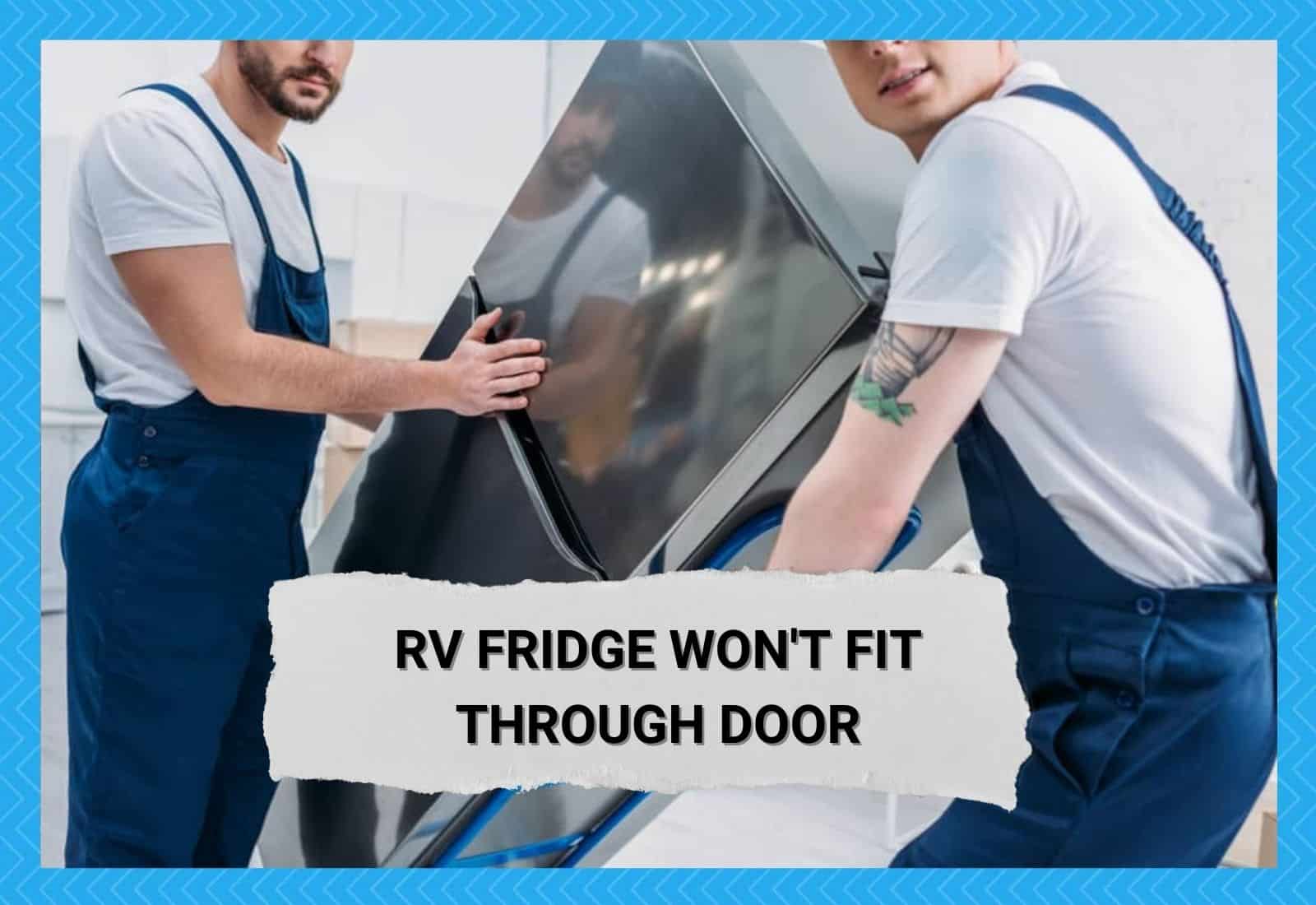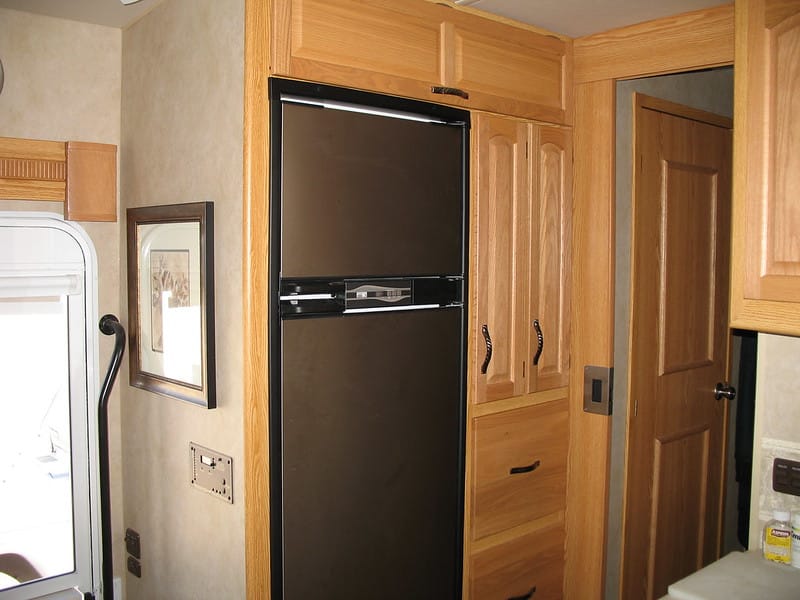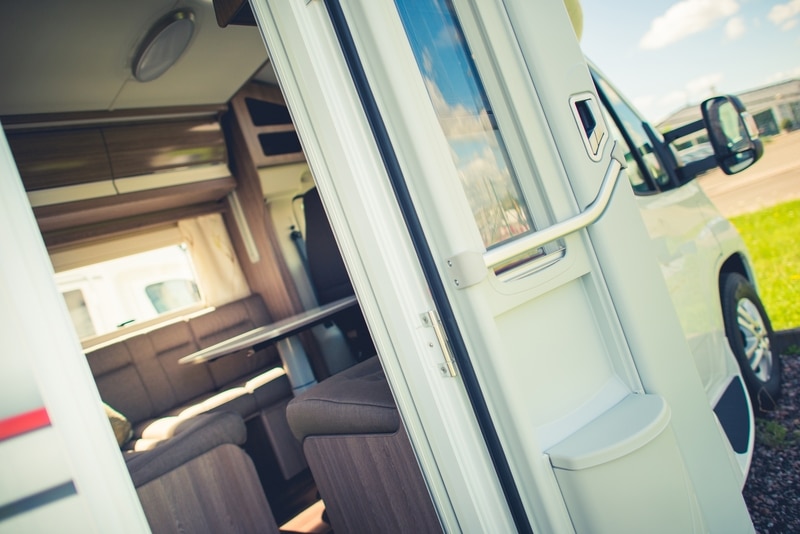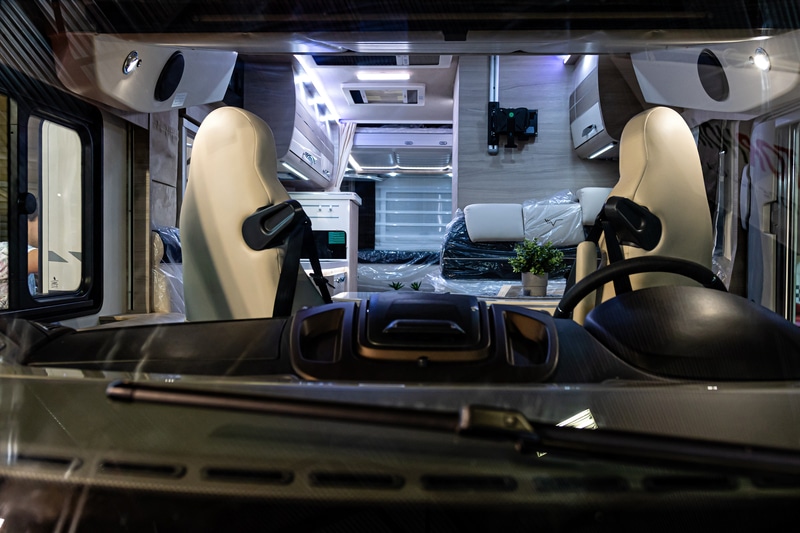
When camping at a remote location, it’s best to pack up everything you need before hitting the road so you won’t have to drive back and forth to the nearest town to get supplies.
But to do that, you need enough storage for at least a week’s worth of food, especially perishables, which isn’t possible with only a pick-up as your transport.
Many camping enthusiasts invest in a recreational vehicle to stay longer and cozier in the wild. It also provides better protection against wild animals and harsh weather than a tent or standard car.
But having an RV alone doesn’t guarantee you can stay outdoors for a certain amount of time without running out of food. It still depends on your food storage capacity. And by storage capacity, I mean the side of your “refrigerator.”
Why Size Matters When It Comes to RV Refrigerators
Unfortunately, you can’t just pick any refrigerator you like for your RV. Given the camper’s limited space, size is an essential consideration. Each RV model has a specific floor plan that includes a standard area for the fridge.
This floor plan is what the manufacturer deems the most suitable for the RV’s dimensions. Going beyond that might cause problems, such as being unable to fit the fridge through the door.
Of course, you can customize your floor layout. However, you still need to factor in the weight of your fridge because it will affect the RV’s performance on the road.
A large and heavy fridge burns more fuel and tires than the one recommended by the manufacturer. Its position also matters as it can significantly affect the load balance within the RV.
For instance, if you place the fridge where the rest of the heavy equipment is, your vehicle might tip over when you swerve.
RV Fridges vs. Residential Fridges
Most RVs are designed to have a dual-fuel fridge. It is custom-made to fit through the door of most RVs. This means you won’t have any problem bringing in a new one should you need a replacement.
The only downside to this fridge is your options are limited. RV refrigerators are also notoriously expensive to buy and maintain, which is why many RV owners eventually decide to purchase a residential refrigerator.
Not only is a residential refrigerator less expensive, but it also comes with various designs and storage capacities. But they only run on electricity, so you need an additional power source to keep it on 24/7.
Also, because residential refrigerators are not cut out for RVs, their electronics and mechanical parts might be more challenging to access through the small opening outside the RV. This means you need to customize the compartment as well.
RV Fridge Won’t Fit Through Door
Besides not being made for RVs and running only on electricity, a residential refrigerator will likely not fit through the RV door. When this happens, you have three options:
1. Remove the RV door
Unlike a typical door, an RV door doesn’t open all the way, so the edge of the door panel still blocks the path into the RV. Plus, there’s an assembly of trims and outer frames that also adds to the thickness of the doorway.
So removing the door, including this assembly, can increase the opening by an inch or two, which makes a huge difference.
RV door styles and installations may vary from brand to brand, although the assembly that seals them shut generally is the same.
To remove the RV door, pull out the pins from the hinges. Then, remove the drip cap retaining screws and tear the seal to separate the drip cap from the frame.
After this, you can pry the door free off the snap trim. Once you take out the drip cap, the rest of the gutter rail retaining screws, and the caulk seal between the side wall and outer frame, it will be easy to pop the door free.
Now that the doorway’s opening is wider, you can haul in the refrigerator. Most RV doors are designed with a slight bend on their upper section, making it difficult to push the fridge vertically.
You must tilt it at just the right angle to push it in comfortably. Too straight, and it will hit the bend. Too tilted, and it will hit the stairs. It will be easy once the head of the fridge pops in smoothly.
Perhaps a more pressing question is how you can reinstall the door. The outer frame, snap trim, gutter rail, and drip cap are easy to reassemble. You have to apply new sealant between them.
2. Remove the refrigerator’s door
If you don’t want to go through the tedious process of removing the RV door, consider removing the door of your refrigerator instead.
This will reduce the refrigerator’s depth, allowing it to fit through the door. It may seem complicated, but it’s easy to do as long as you have the correct wrenches.
So how do you do it? First, you need a hex-head socket wrench and an open-end wrench. Most refrigerator doors are hinged, which is why they open by pivoting around vertical pins.
Your goal is to unscrew all the hinges to remove the doors. A standard residential fridge with upper and lower storage compartments has a door hinge at the top, center, and bottom.
Begin at the top. Unscrew the top hinge using a hex-head socket wrench. These are 5/16-inch hex-head hinge screws, so see that your wrench is the correct size. Once the top hinge is removed, you can easily lift the upper door off the center hinge.
Then, unscrew the center hinge to remove the lower door. The bottom hinge must be removed as well because it’s protruding. You’d want the edges of the fridge to be completely free of any protrusions to glide smoothly into the doorway.
3. Remove the windshield
Next to the door, the biggest opening you can create for your fridge to fit into your RV is through the front window. All you need to do is remove the windshield, and you’ll have more than enough opening to push your fridge (and any other large furniture) into your camper.
Removing the windshield is more manageable than removing the RV door because it doesn’t have a mechanical assembly. The only thing that connects it to the window frame is the bead.
But, of course, this bead is tightly sealed along the rim, which is why you need any simple tool that can pry it open without scratching or cracking the glass pane.
You only have to remove one pane. That’s a big enough opening for a fridge. Either glass pane is suitable as long as no obstruction can prevent you from pushing the refrigerator all the way inside.
lso, don’t forget to use a glass suction cup when removing the windshield to avoid accidentally dropping it. You’ll most likely need to install a new beading to return the windshield.
Upgrading Your RV Takes Some Creativity
Manufacturers design their compact vehicles so efficiently that sometimes, it feels like they don’t want you to add anything, even basic appliances. That makes RV installations quite complicated.
You must be resourceful and creative when installing equipment, such as refrigerators. You have to try a few ideas and be ready to make mistakes.
Be careful, though, because you might damage your RV, which can trigger a chain of malfunctions that will cost a fortune in the long haul.





